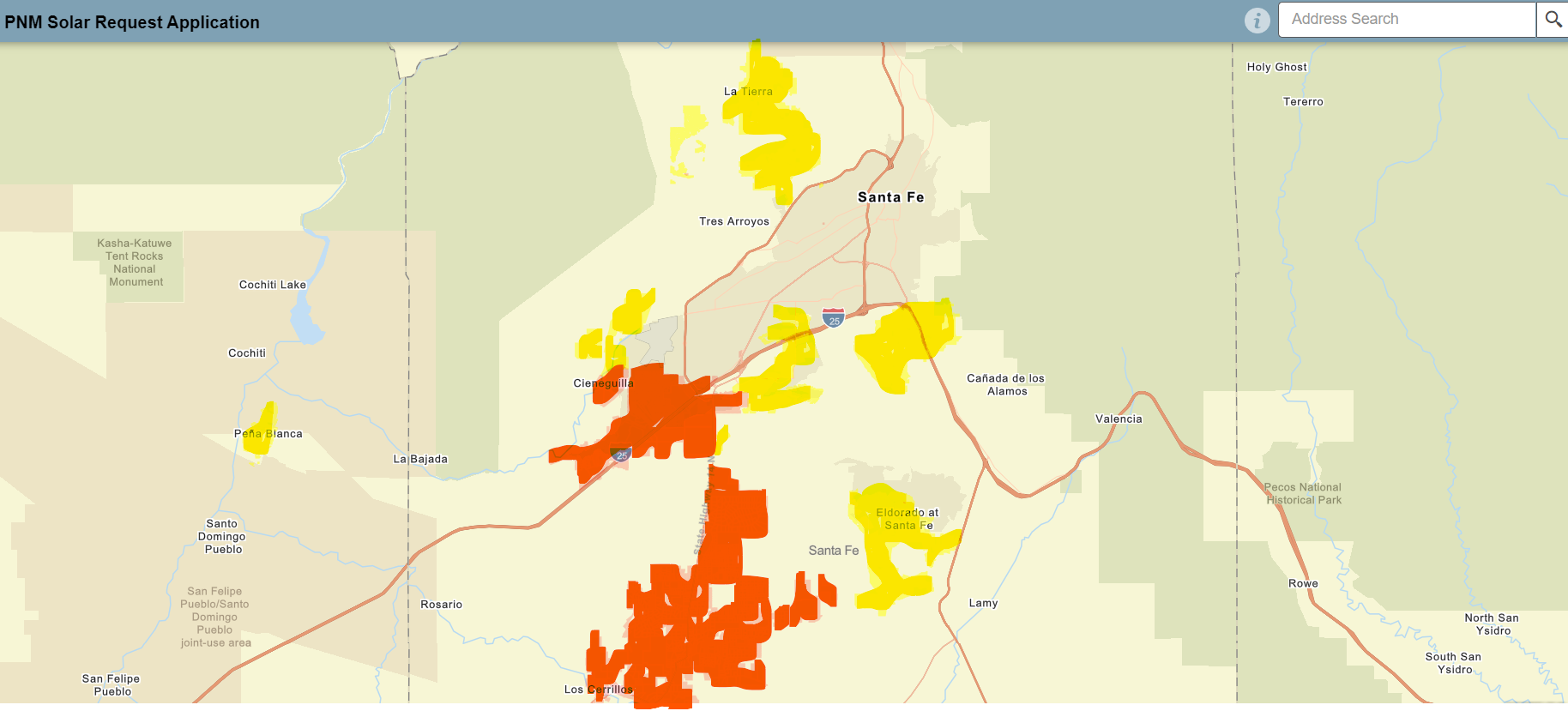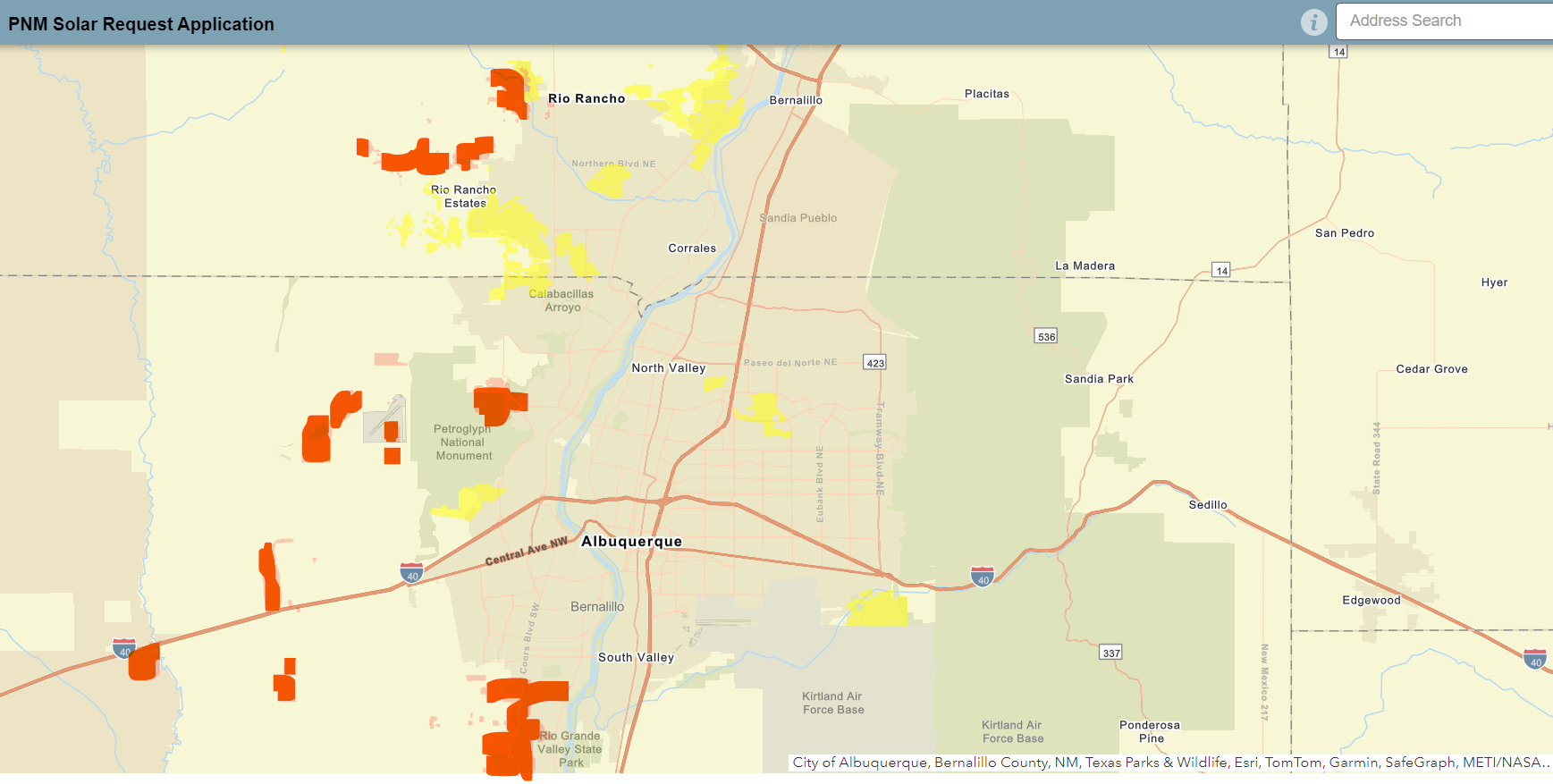As solar energy gains popularity, more homeowners in New Mexico are looking to harness the power of the sun. However, some are encountering an unexpected obstacle: their utility provider, PNM, is not allowing them to go solar and partake in net metering program. This issue arises from the limitations of the existing electrical infrastructure and the growing demand for rooftop solar installations. Let’s delve into why this is happening and what it means for homeowners considering solar energy.
The Growing Demand for Solar Energy
New Mexico’s largest utility provider, PNM, projects that by 2040, nearly a quarter of its customers will have rooftop solar systems. This rapid adoption of solar energy is a positive step towards sustainability, but it also brings challenges. The current electrical grid, including feeders, substations, transformers, and wires, was not designed to handle the additional power generated by so many solar installations or the increased energy demand and consumption needed by todays modern standards.
Understanding Feeders and Grid Capacity
In layman’s terms, feeders are the components that distribute electricity across the grid. They are crucial for maintaining a stable and reliable flow of electricity. However, many of these feeders are outdated and undersized. When too many solar systems are connected to a feeder that is near its capacity, it can lead to instability and potential failures in the electrical grid.
The Yellow and Red Zones
To manage this issue, PNM has designated certain areas as "Yellow Zones" and "Red Zones." These zones help determine whether new solar installations can be safely connected to the grid.
- Yellow Zones: These are areas where the feeders are close to reaching their capacity. Homeowners in Yellow Zones who wish to install solar systems, expand their existing systems, or add batteries for backup power must undergo a "supplemental review" by PNM. This review ensures that the proposed installations will not overload the feeders and compromise the grid’s stability. There's also a potential that those who live in designated yellow zones and want to install solar panels will be denied.
- Red Zones: When feeders in a Yellow Zone reach their maximum capacity, the area is designated as a Red Zone. In Red Zones, no additional solar systems can be connected to the grid until the feeder line capacity and infrastructure are updated. This means that homeowners in Red Zones may be unable to install new solar systems or expand existing ones until significant upgrades are made to the electrical grid.
Santa Fe Region

Albuquerque Region

The Impact on Homeowners
The increasing prevalence of Yellow and Red Zones is a direct consequence of the growing energy demand as well as adoption of solar energy backfeeding onto the grid, allowing for access to net-metering programs. While this used to be a relatively uncommon issue, more areas are now experiencing these limitations. For homeowners living in Santa Fe, Albuquerque and surrounding areas this means that there could be a race to install solar systems before feeder capacities are maxed out.
What Could New Mexico Do?
New Mexico utilities are regulated under the Public Regulation Commission (PRC). The PRC serves New Mexico by ensuring safe operations and reliable utility services at fair, just, and reasonable rates consistent with the State's legal, economic, environmental, and social policies. Items related to rate increases, solar net metering rules, and even cost structures associated with upgraded infrastructure like electricity grid distribution can fall under their scope. These policies often involve Senate lead initiatives as well. A recent Colorado bill (Modern Energy Distribution System SB 24-218 ) addresses the very kinds of issues that are raised by what PNM is doing in this market and could be a model for New Mexico.
What Positive Energy Solar Can Do for You
At Positive Energy Solar, we understand the challenges that come with these grid limitations. During our free solar evaluation, one of the first things we assess is your solar feasibility in relation to PNM’s Yellow and Red Zones and interact with the utility company on your behalf. Our goal is to provide you with a clear understanding of your options and help you navigate the complexities of solar installation in New Mexico.
We believe in a transparent, educational approach to solar energy. Our team of experts is dedicated to ensuring that you receive reliable, long-term value from your solar investment. We are committed to helping you make informed decisions and providing the support you need throughout the process.
Conclusion
The issue of PNM not allowing some homes to go solar highlights the need for updated and expanded electrical infrastructure to accommodate the growing demand for renewable energy. As more homeowners look to solar power as a sustainable solution, it is essential to address these challenges and work towards a more resilient and capable electrical grid. At Positive Energy Solar, we are here to guide you through these complexities and help you achieve your solar energy goals.
For homeowners interested in solar, it’s crucial to stay informed and act quickly.
If you are considering solar energy for your home, contact Positive Energy Solar today for a free evaluation. Let us help you determine the best path forward in your journey towards sustainable energy.



